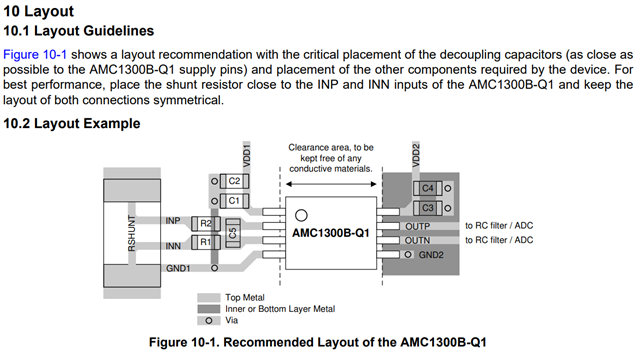Tool/software:
Hello Experts,
We are using AMC1300B for a circuit breaker trip unit design.
To decrease CM dV/dt assigned on AMC1300B, we add 2.2nF Y2 capacitor between primary and secondary.
We found when Y2 capacitor is placed underneath AMC1300B (on the opposite layer) or close to AMC1300B on the same layer or opposite layer, during 4kV EFT test between primary and secondary of AMC1300B,
The output of AMC1300B will be saturated (without EFT, the output is normal, within the linear operating range).
When Y2 capacitor is placed far away from AMC1300B (>2cm), no any abnormal at all.
Could you help explain what sensitivity of AMC1300B causes this phenomena?
What is the recommended placement and layout between AMC1300B and Y type capacitors if Y capacitor is used?
Thanks in advance.
Best Regards,
Fenglian










